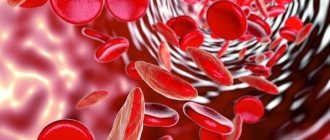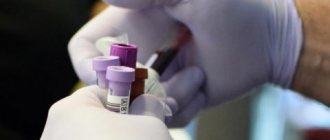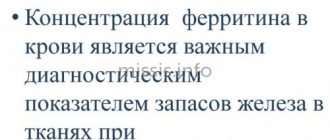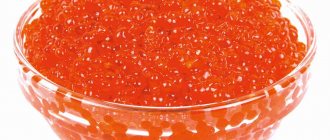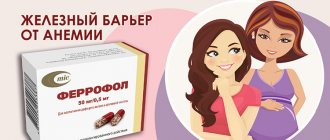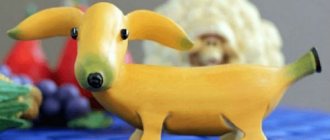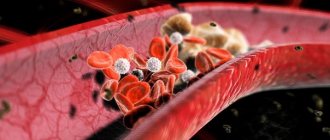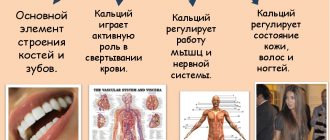"We live because we breathe..."
...and iron plays a huge role in this, and at the cellular level. The adult body contains an average of 5 grams of iron. Most of it is found in hemoglobin, which transports oxygen to all organs and tissues, up to 10% is in myoglobin, the “oxygen cushion” for skeletal muscles and myocardium. Our body keeps approximately a quarter of the total amount of iron in reserve - in the liver, muscles, spleen, and bone marrow. And 1% of the mineral is contained in special enzymes that ensure the processes of cellular “respiration”. Iron's position is more than privileged. He even has his own personal “taxi” - the protein transferrin, which “carries” the metal directly to the places of use.
Folk remedies and vitamin complexes
If the inclusion of the above products in the diet does not bring the desired effect, then you can use folk remedies to increase hemoglobin levels. Many of them are extremely effective and are recommended for use even by doctors. The most popular of these methods:
- Dandelion root decoction. Helps normalize the biochemical composition of the blood and accelerate the removal of toxins. To prepare, mix 30 grams of grated fresh dandelion roots with 2 cups of boiling water. Leave for at least 2 hours (until completely cooled). Take 1 teaspoon, diluting it in a glass of water with honey. Take 2 times a day.
- Infusion of rosehip and honey. To prepare, mix 10 grams of dry grated rose hips, 2 tablespoons of honey and a glass of boiling water. Infuse for 30-40 minutes, take as tea 2 times a day. The course is no more than 2 weeks (if longer, there may be excess iron in the body, which also negatively affects health).
- Infusion of St. John's wort, blackberry leaves and chamomile. Mix 1 teaspoon of dry herbal base, add 300 milliliters of water and leave for 2 hours. Take 50 milliliters 3 times a day until hemoglobin levels normalize (but not more than 4 weeks).
If traditional methods of treatment do not bring the desired effect, then drug therapy is prescribed. As a rule, these are multivitamin complexes with a high content of iron, B vitamins, and ascorbic acid. But calcium in such preparations is either completely absent or contained in very small quantities. Popular vitamin complexes of this group:
- Decamevit;
- Aevit;
- Complivit;
- Doppel-Hertz (with iron).
Just check with your doctor for the recommended dosage, as well as the duration of the course of treatment.
Causes of iron deficiency and increased need for it
- Heavy or prolonged periods. They lead to increased blood loss and depletion of iron reserves.
- Pregnancy and breastfeeding. During pregnancy and childbirth, the need for iron increases on average by 2 times, and during lactation even more.
- Pathological chronic blood loss.
- Passion for vegetarianism, veganism or raw food eating. Non-heme iron from plant foods is less absorbed than heme iron from animals and requires the presence of vitamin C.
- Frequently eating fast food, which is poor in useful components, including minerals.
- Consumption of foods that bind iron and reduce its absorption in the intestines. For example, this is how salts of phytic acid act in unleavened dough made from whole grain flour and in cereals; oxalates of fresh vegetables, especially rhubarb, spinach, sorrel; phosphoproteins of eggs, polyphenolic compounds of coffee and tea, milk lactoferrin, EDTA preservative in carbonated drinks, seasonings, sauces and mayonnaise.
- Taking certain medications (for example, some antibiotics, antacids, proton pump blockers, H2 blockers).
- Diseases of the gastrointestinal tract (celiac disease, peptic ulcer, inflammatory bowel disease, tumors, diverticulosis, parasitic infestations, etc.).
- Pathology of the urinary system (hemorrhagic cystitis, urolithiasis, glomerulonephritis).
- Overweight and obesity. In this condition, there is an increased production of pro-inflammatory substances that negatively affect the absorption and bioavailability of iron.
- Regular exercise. They significantly increase the need not only for proteins, but also for vitamins and minerals, including iron.
Iron chelate, 60 tablets, Evalar
375 ₽
Dietary supplement NOT A MEDICINE
General nutrition rules
To raise hemoglobin more quickly and effectively, nutritionists recommend following the following tips:
- Keep small meals. You need to eat in small portions, but as often as possible. Optimally – at least 6 times a day.
- Avoid cereals (except buckwheat) and fermented milk products - they all slow down the absorption of iron and interfere with the production of formed elements and hemoglobin.
- Walk in the fresh air as often as possible - a sufficient balance of oxygen in the blood also indirectly stimulates the renewal of hemoglobin molecules and prevents the oxidation and destruction of red blood cells. Ideally, take walks in the fresh air after each meal (this will also help significantly speed up your metabolism).
- Avoid tea and coffee. It is better to give preference to herbal teas, as well as homemade compotes, fruit and vegetable juices.
- Do not eat 2-3 hours before your planned bedtime. Metabolic processes during sleep slow down significantly, so iron and vitamins are practically not absorbed during this period (but the load on the gastric mucosa increases, since the utilization of gastric juice slows down).
Iron deficiency - symptoms in women
We often attribute rapid fatigue, lack of vital energy, irritability, mood swings, frequent dizziness and an increased tendency to colds, restless legs syndrome to constant stress, heavy workload, weather conditions... There are many reasons for deterioration in well-being, isn’t it? ? But when external changes add to the collection of problems - the skin becomes dry, cracks appear in the corners of the mouth, nails change their shape (take on a concave appearance) and become fragile, and the hair becomes dull, often breaks and falls out more than usual, then the question arises: what is it about? What is the body trying to tell us? These manifestations can occur due to a lack of iron.
Interesting fact A woman can be “craving for salty foods” not only during pregnancy, but also, for example, due to iron deficiency. Its signs also include unusual changes in taste (the desire to “feast” on sand, chalk, clay, tooth powder, raw minced meat, etc.), and smell (the smells of gasoline, acetone, varnish, and paint seem attractive).
And iron deficiency in a child can manifest itself as a decrease in learning ability, increased fatigue, lethargy, tearfulness, and a tendency to frequent colds and intestinal infections. If you have the above symptoms, there is a reason to go for a check-up. However, it doesn’t hurt to get checked even in the absence of obvious symptoms of iron deficiency, in order to exclude its hidden deficiency.
Laboratory check: not just hemoglobin!
The hemoglobin level, of course, is a very important indicator, but it must be remembered that its norm does not exclude the presence of the latent (hidden) iron deficiency we have already mentioned - a condition in which the metal reserves in the body are already depleted. That is why today, for a more accurate diagnosis of an iron deficiency state, in addition to hemoglobin and the number of red blood cells, a whole range of laboratory indicators is used: ferritin and serum iron levels, iron-binding capacity of serum, transferrin saturation with iron, morphological assessment of red blood cells, etc. A full check will help the specialist dot the i's. . If there is a severe lack of iron and anemia, it is necessary to conduct an urgent comprehensive examination to identify possible health problems that are causing it.
Readily Available Iron 18 mg, 60 Capsules, Nature's Bounty
925 ₽
Dietary supplement NOT A MEDICINE
Hemoglobin norm depending on age
The normal level of iron-containing protein depends on several factors. It differs radically depending on the age and gender of a person. Before determining the amount of iron-containing protein in the blood, you need to familiarize yourself with the generally accepted reference values for this indicator.
- middle-aged men - 120-160 g/l;
- middle-aged women - 110-140 g/l;
- children under 6 months - 140-220 g/l;
- children from 6 months to 18 years - 95-140 g/l.
A decrease in hemoglobin levels below critical levels is called iron deficiency anemia and requires treatment. Correction of healthy protein levels can be carried out using medications containing iron or following a special diet.
To verify the reduced value, it is advisable to repeat the home measurement several times.
If all the results indicate a pathologically low level of hemoglobin, you should definitely consult a physician, since anemia can have dangerous consequences for the human body.
Which iron is best to take?
As an additional source of iron, a specialist may choose tablets or capsules of readily available iron. For example, iron in amino acid chelate form - easily digestible and as natural as possible for our body. Hemoglobin and other iron-containing proteins are clear confirmation of this! Another important advantage of chelated iron is the absence of side effects from the gastrointestinal tract. In case of hidden microelement deficiency, iron can also come to the rescue in combination with vitamins and minerals that increase its bioavailability: for example, vitamins C, B12, folic acid, zinc, copper, manganese.
Chlorella tablets, 100 g, polezzno
889 ₽
Dietary supplement NOT A MEDICINE
Interesting fact Copper is a great friend of iron! It promotes its inclusion in hemoglobin during the formation of new red blood cells. When there is too little copper in the body, red blood cells do not mature fully and this can lead to anemia.
Spirulina, chlorella, quinoa, lentils, buckwheat, pumpkin seeds and other superfoods can provide good support for iron deficiency.
Authorized Products
Nutrition for low hemoglobin is based on the inclusion in the diet of foods containing the maximum amount of iron: internal organs and offal (beef and chicken liver, chicken stomachs and hearts, beef tongue), red meat (beef), meat products (ham, sausage, frankfurters), fish and fish products (caviar, balyk, sprats, sardines), seafood (mussels, shrimp, squid), butter and vegetable oil.
As for dairy products, it is useful to include cheeses, cottage cheese, and fermented milk products in your diet. Soups and all first courses are prepared in strong meat or fish broth. To prepare a side dish with a low iron content, you can use almost all types of cereals, legumes and pasta.
It is recommended to include sufficient quantities of wheat/rye bread and flour products (bakery, baked pies, biscuits) in the diet. All vegetables and fruits are allowed in any culinary processing; it is especially important to include in the diet fruits and vegetables with a high content of ascorbic acid (citrus fruits, rose hips, chokeberries, black currants). The diet should contain various dried fruits - dried apricots, raisins, prunes, figs; seeds and nuts - almonds, pistachios, peanuts, cashews, walnuts, sunflower seeds, pumpkin.
Vegetable and leafy salads are very healthy. Therapeutic nutrition involves the inclusion of sweet foods and dishes made from them (honey, jams, preserves) into the diet. Honey is especially useful. The fructose it contains promotes the absorption of iron in the intestines. It is preferable to consume dark varieties of honey as they contain more copper, iron and manganese. If acidity is low, honey is consumed immediately before meals, and if acidity is high, honey should be consumed 1.5 hours before meals. In the absence of contraindications, you are allowed to eat up to 50 g of honey per day. As for drinks, be sure to include in your diet a decoction of wheat bran and rose hips, vegetable and fruit juices, especially beet juice.
Table of permitted products
| Proteins, g | Fats, g | Carbohydrates, g | Calories, kcal | |
Vegetables and greens | ||||
| boiled cauliflower | 1,8 | 0,3 | 4,0 | 29 |
| boiled potatoes | 2,0 | 0,4 | 16,7 | 82 |
| boiled carrots | 0,8 | 0,3 | 5,0 | 25 |
| salad pepper | 1,3 | 0,0 | 5,3 | 27 |
| boiled beets | 1,8 | 0,0 | 10,8 | 49 |
| dill | 2,5 | 0,5 | 6,3 | 38 |
Fruits | ||||
| apricots | 0,9 | 0,1 | 10,8 | 41 |
| oranges | 0,9 | 0,2 | 8,1 | 36 |
| cherry | 0,8 | 0,5 | 11,3 | 52 |
| grapefruit | 0,7 | 0,2 | 6,5 | 29 |
Berries | ||||
| cranberry | 0,5 | 0,0 | 6,8 | 26 |
| gooseberry | 0,7 | 0,2 | 12,0 | 43 |
| Rowan | 1,5 | 0,1 | 10,9 | 50 |
| currant | 1,0 | 0,4 | 7,5 | 43 |
| rose hip | 1,6 | 0,0 | 14,0 | 51 |
Nuts and dried fruits | ||||
| nuts | 15,0 | 40,0 | 20,0 | 500 |
| prunes | 2,3 | 0,7 | 57,5 | 231 |
Cereals and porridges | ||||
| buckwheat (kernel) | 12,6 | 3,3 | 62,1 | 313 |
| oat groats | 12,3 | 6,1 | 59,5 | 342 |
| cereals | 11,9 | 7,2 | 69,3 | 366 |
| Wheat groats | 11,5 | 1,3 | 62,0 | 316 |
| wheat bran | 15,1 | 3,8 | 53,6 | 296 |
Bakery products | ||||
| wheat bread | 8,1 | 1,0 | 48,8 | 242 |
| whole grain bread | 10,1 | 2,3 | 57,1 | 295 |
Confectionery | ||||
| jam | 0,3 | 0,1 | 56,0 | 238 |
Raw materials and seasonings | ||||
| honey | 0,8 | 0,0 | 81,5 | 329 |
Dairy | ||||
| condensed milk | 7,2 | 8,5 | 56,0 | 320 |
| kefir 3.2% | 2,8 | 3,2 | 4,1 | 56 |
| cream 15% (low fat) | 2,3 | 15,0 | 3,6 | 161 |
| sour cream 15% (low fat) | 2,6 | 15,0 | 3,0 | 158 |
Cheeses and cottage cheese | ||||
| cheese | 24,1 | 29,5 | 0,3 | 363 |
| cottage cheese | 17,2 | 5,0 | 1,8 | 121 |
Meat products | ||||
| lean pork | 16,4 | 27,8 | 0,0 | 316 |
| pork liver | 18,8 | 3,6 | 0,0 | 108 |
| beef | 18,9 | 19,4 | 0,0 | 187 |
| beef liver | 17,4 | 3,1 | 0,0 | 98 |
| beef brains | 9,5 | 9,5 | 0,0 | 124 |
| calf liver | 19,2 | 3,3 | 4,1 | 124 |
| mutton | 15,6 | 16,3 | 0,0 | 209 |
| rabbit | 21,0 | 8,0 | 0,0 | 156 |
| ham | 22,6 | 20,9 | 0,0 | 279 |
| liver pate | 11,6 | 28,9 | 2,5 | 317 |
| beef stew | 14,1 | 17,4 | 0,0 | 214 |
Sausages | ||||
| smoked sausage | 16,2 | 44,6 | 0,0 | 466 |
| blood sausage | 9,0 | 19,5 | 14,5 | 274 |
| beef sausages | 11,4 | 18,2 | 1,5 | 215 |
Bird | ||||
| chicken liver | 20,4 | 5,9 | 1,4 | 140 |
| turkey | 19,2 | 0,7 | 0,0 | 84 |
| turkey liver | 19,5 | 22,0 | 0,0 | 276 |
| goose liver | 15,2 | 39,0 | 0,0 | 412 |
Eggs | ||||
| chicken eggs | 12,7 | 10,9 | 0,7 | 157 |
Fish and seafood | ||||
| brown algae | 1,7 | 0,6 | 8,3 | 43 |
| pink salmon | 20,5 | 6,5 | 0,0 | 142 |
| Red caviar | 32,0 | 15,0 | 0,0 | 263 |
| cod roe | 24,0 | 0,2 | 0,0 | 115 |
| pike caviar | 17,3 | 2,0 | 0,0 | 87 |
| squid | 21,2 | 2,8 | 2,0 | 122 |
| shrimps | 22,0 | 1,0 | 0,0 | 97 |
| salmon | 19,8 | 6,3 | 0,0 | 142 |
| mussels | 9,1 | 1,5 | 0,0 | 50 |
| seaweed | 0,8 | 5,1 | 0,0 | 49 |
| herring | 16,3 | 10,7 | — | 161 |
| cod (liver in oil) | 4,2 | 65,7 | 1,2 | 613 |
| trout | 19,2 | 2,1 | — | 97 |
Oils and fats | ||||
| vegetable oil | 0,0 | 99,0 | 0,0 | 899 |
| butter | 0,5 | 82,5 | 0,8 | 748 |
| olive oil | 0,0 | 99,8 | 0,0 | 898 |
| * data is per 100 g of product | ||||
